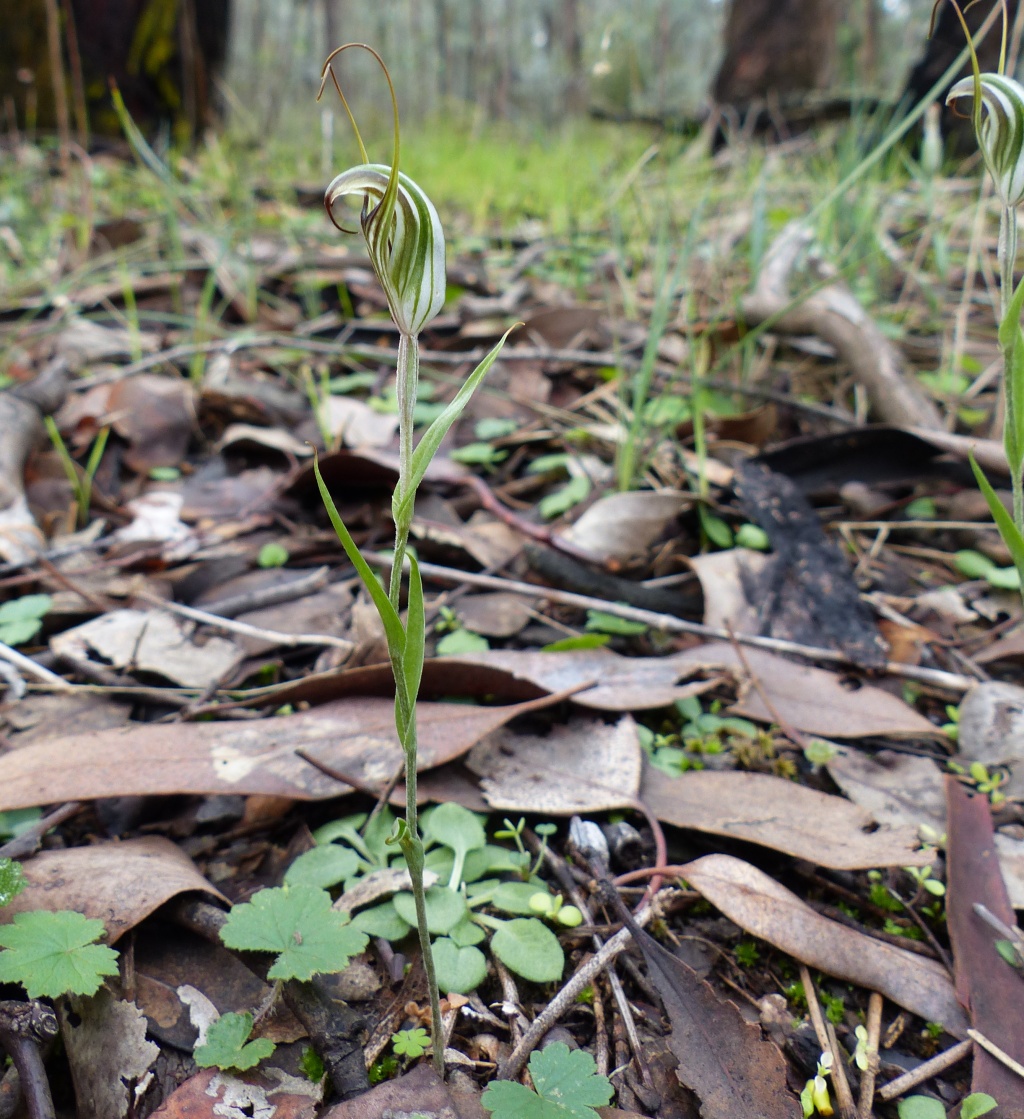Pterostylis striata
Fitzg.Flowering plant to 25 cm tall, stem leaves 3–7, spreading. Rosette leaves 4–10, ovate, 4–15 mm long, 3–11 mm wide, petiolate, margins finely crisped. Ovary and pedicel smooth to scabrous. Flower 19–22(–28) mm long, erect, green and white with red-brown to brown suffusions and stripes; dorsal sepal with a filiform point 2–4(–8) mm long; lateral sepals erect, tightly embracing the galea, sinus flat with a shallow central v-notch, protruding in a shallow curve when viewed from the side, free points to 1.4–1.6 cm long, filiform, erect, often curved forwards at the apex; petal margins not or slightly flared. Labellum oblong-lanceolate, tapered, 7–9(–13) mm long, 2–2.6 mm wide, dark reddish-brown to nearly black distally, the tip just visible over the sinus in the set position. Flowers May.–Aug.
LoM, MuM, Wim, GleP, VVP, VRiv, GipP, OtP, WaP, Gold, CVU, GGr, DunT, NIS, EGL, EGU, WPro, HSF, HNF. Also SA, NSW. Widespread in Victoria, from tea-tree scrub on coastal dunes to dry open forests and woodlands, on well-drained soils.
Pterostylis nichollsiana was erected to accommodate larger-flowered plants with a longer filiorm point on the dorsal sepal (indicated by bracketed measurements in the above description), known in the Hurstbridge-Greensborough area and coastal sites near Melbourne (where now very rare if extant), but examination of specimens across the geographic range of P. striata suggests that characters that were used to distinguish P. nichollsiana are continuous between it and typical P. striata. As a consequence, P. nichollsiana is treated here as a synonym.
Hybridizes sporadically with P. concinna (see P. ×toveyana).
 Spinning
Spinning

